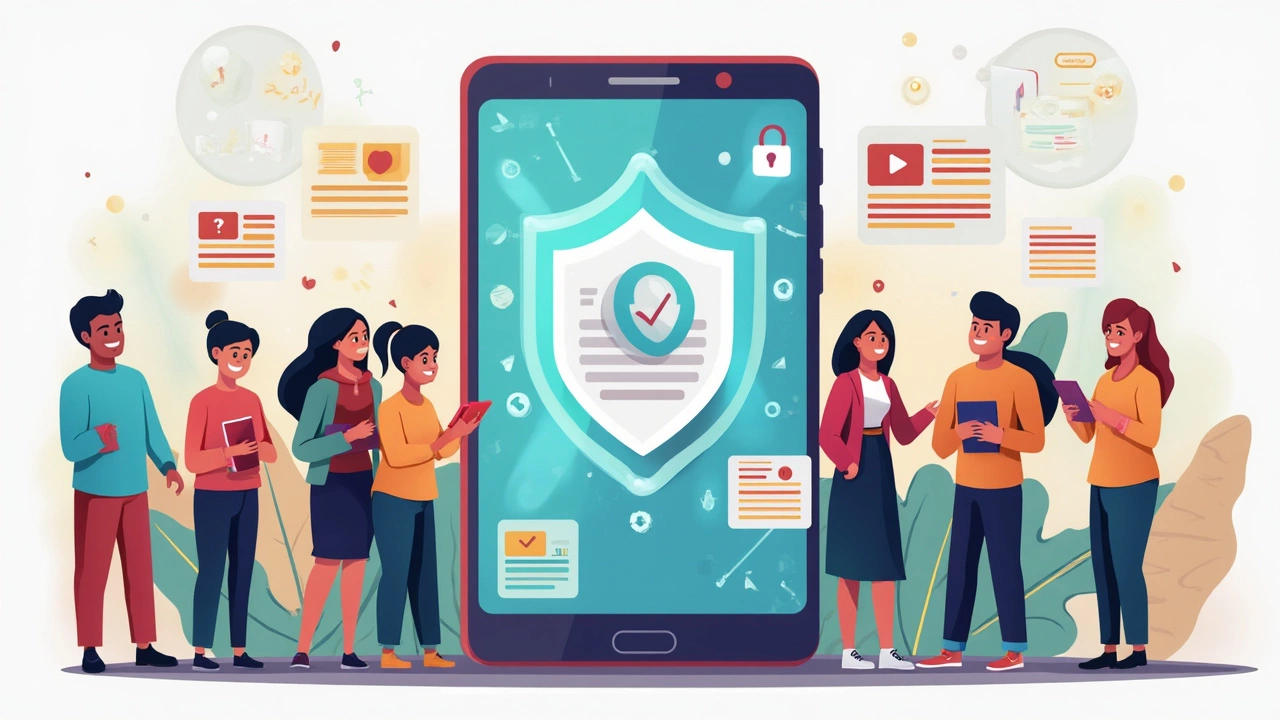Imagine waking up, grabbing your phone, and finding your bank account drained, strange logins on your socials, and your inbox stuffed with spam. Nightmare, right? That’s just a taste of what real people go through every day thanks to cyber attacks. We usually hear headlines about massive corporations suffering millions in losses, but these digital threats hit closer to home than the evening news lets on. It's not just big firms on the hook; individuals, small businesses, and even schools have become targets. This wild digital battlefield is more chaotic than a rush hour traffic jam. Digging into cyber attacks isn’t about spreading doom. It’s about knowing what’s out there, figuring out what these attacks really do, and—most important—learning how to dodge them. Let's tear off the cloak and see what’s lurking in the world of cyber threats.
What Are Cyber Attacks and Why Do They Happen?
Cyber attacks aren’t some sci-fi movie plot. They're real events, from hackers stealing your credit card to sneaky viruses corrupting personal photos. At the core, a cyber attack is any attempt to access, change, destroy, or steal data through digital means—and it can happen to anyone who’s even briefly connected to the internet.
Most of these attacks have a clear motive: money, power, revenge, or even chaos for fun. Maybe you thought only major governments or billion-dollar companies faced real threats? Nope. In 2024, small business attacks shot up by 32% according to Check Point Research. Hackers are always on the lookout for weak spots: forgotten passwords, unpatched software, or even careless clicks on sketchy links.
Types of cyber attacks come in a confusing menu. Phishing? That’s baiting you with fake emails to nab personal info. Ransomware? These hackers lock your data and make you pay (sometimes thousands) to get it back. DDoS attacks can take down an entire website just to make a point. And then there’s malware—nasty programs hiding out on your computer or phone, watching everything you do. Here’s a shocking fact: one in three Americans was affected by some form of data breach in 2023, according to the Identity Theft Resource Center. That’s not just techy news jargon—think about the personal chaos of losing your identity or watching your savings vanish.
So why do these attacks keep happening? Because, honestly, they work. Human error is everywhere (like the classic password ‘123456’), and new gadgets give hackers fresh opportunities. Criminal “businesses” build and sell attack tools on the dark web like it’s Amazon for cyber crooks. If you store anything remotely valuable online—photos, finances, work files—you can be a target without even realizing it. That’s the wild west we’re living in, and pretending it doesn’t exist just makes things worse.
The Real Damage: How Cyber Attacks Impact Lives and Businesses
So, are cyber attacks bad? Let’s not sugarcoat it: they’re devastating, both for your private life and big public corporations. First, consider your daily routine. Ever had your Netflix account hacked? Suddenly you’re locked out; strangers are binge-watching in your name. Take that up a notch, and think about someone snooping on your work emails or emptying out your PayPal. The cost isn’t just money—it’s lost time, anxiety, trust, and a nasty feeling of being exposed.
For businesses, the damage runs deeper. The average cost of a single data breach hit $4.45 million worldwide in 2023 (IBM Security). That’s not just tech teams scrambling—it’s jobs lost, clients bailing, lawsuits flying, and a company’s good name in tatters. Hospitals hit by ransomware can’t access patient files, putting lives on the line. Schools have shut down for days because their entire networks were locked down by teenage hackers demanding Bitcoin. These attacks can leave scars that don’t heal fast.
Individuals suffer too. According to a 2024 Pew Research survey, 71% of Americans worry about their personal data being stolen online. Elderly folks fall prey to fake tech support scams, losing savings and their sense of safety. Kids get bullied when their private messages get leaked. Entire communities freeze in panic when local governments are breached, locking out city services for days or weeks. Then there’s the mental aftermath: the helplessness and shame victims feel when their privacy evaporates in an instant.
It’s not just the victims who pay. Companies have to invest more in cybersecurity teams and software, meaning less money for new hires or better services. Insurance costs climb. Courts get flooded with lawsuits from angry customers. For some companies, one big attack can spell the end. For individuals, recovering from ID theft takes months, even years. It’s an invisible wound that can bleed you dry if you’re not ready.

Can Cyber Attacks Ever Be Good?
Here’s a wild twist: some cyber attacks (or the people behind them) actually help the world. Not all hackers are criminals. You’ve got ‘white hat’ hackers, basically digital Good Samaritans, who poke holes in systems just to show companies what needs fixing. Big tech players like Google and Microsoft pay millions every year to folks who spot and report flaws before the bad guys find them. Since 2018, Apple alone has paid out more than $20 million in ‘bug bounties’ for responsibly reported security flaws.
Some attacks also wake up sleepy leaders. It sometimes takes a dramatic event—like the huge Colonial Pipeline ransomware attack in 2021 that shut down fuel for half the US east coast—to make companies and governments get serious about basic safety practices. After incidents like these, you see new laws, better training, and stronger protections rolling out. It’s like locking your doors only after a break-in, but at least people start paying attention.
Another strange benefit: public awareness. Each high-profile breach makes regular folks smarter. More people now use multi-factor authentication, shop from secure sites, and question weird emails. Schools are teaching cyber safety. Parents are getting savvier about their kids’ online moves. In a roundabout way, attacks force us to grow up digitally. We learn the hard way, but we do learn.
Still, these ‘good’ outcomes come at a cost. False alarms and harmless probing (the ‘Harmless Hacker’ on YouTube is notorious for exposing holes without stealing anything) aren’t the real threat. But plenty of attacks that start as ‘just poking around’ end up going rogue. Not to mention: even ethical hackers sometimes cross a line and get sued or prosecuted. Good intentions can explode if you’re not careful.
Spotting a Cyber Threat: How You Can Stay Protected
Here’s where you actually take charge, no hacking degree required. The average person, armed with basic knowledge, can dodge about 90% of common attacks. It’s all about looking out for red flags and knowing what to do when you spot them.
- Cyber attacks often start with trickery—fake emails, texts, or calls. If someone asks for your password, urgent “verify now” links, or money from someone you trust, double-check before you click anything.
- Use strong, unique passwords for every account. The longer and weirder, the better. Password managers can help keep things sane.
- Turn on two-factor authentication (2FA). This makes it way harder for thieves to break in, even if they guess your password.
- Keep your software updated—apps, phones, laptops. Hackers often exploit outdated programs. Automatic updates are your friend.
- On public Wi-Fi? Avoid banking or shopping. If you have to, use a VPN to shield yourself from prying eyes.
- Back up important data on an external drive or safe cloud account. If ransomware strikes, you won’t be cornered into paying to get your files back.
- Talk openly about cyber safety at home and work. It’s less awkward to discuss common scams than to pick up pieces after an attack.
The 2024 CyberEdge Group report showed that 63% of attacks succeeded because someone opened a bad attachment or clicked a poisoned link. Those simple mistakes do enormous damage. So, whenever something feels off or too good to be true—trust your gut and pause.
Don’t forget about your smart home, either. Change your devices' default passwords and check for updates regularly. Even your fridge, doorbell, or baby monitor can be a digital ‘open window’ for hackers if left unsecured.

The Future of Cyber Attacks: What’s Next?
Looking ahead, the war online is only getting messier. Hackers are using AI tools to craft believable fake videos, audio, and emails. Deepfakes are making scams even trickier to spot. Ransomware attacks now hit not just businesses, but hospitals, schools—even police departments. The FBI’s 2023 Internet Crime Report recorded over $12.5 billion in losses from cybercrime, up 14% from the year before.
But there’s hope. Cybersecurity industries are cranking out smarter tech, training more cyber pros, and pushing governments to pass stronger privacy laws. The rise of zero-trust networks (where nobody is trusted by default, even inside a company), smarter firewalls, and real-time threat monitoring is making attacks harder to pull off.
At the same time, attackers are getting creative. Phishing that once came as clumsy, misspelled emails now shows up as texts, phone calls, and even deepfake video calls. Kids, older adults, and business owners alike need to level up their digital street smarts.
One wild prediction? As quantum computing takes off, some of today’s strongest encryption could be cracked in minutes. That’s why tech companies are racing to build ‘quantum-proof’ security. Meanwhile, home users should focus on common sense tactics: strong passwords, healthy skepticism, regular updates, and solid backups.
The cat-and-mouse game isn’t ending anytime soon. As long as there’s data worth stealing, people will try to take it. But the smarter you get, the smaller your risk. If you take one thing away, it’s this: cyber attacks aren’t just bad—they’re a call to action. The digital world won’t get safer unless we all play our part.
